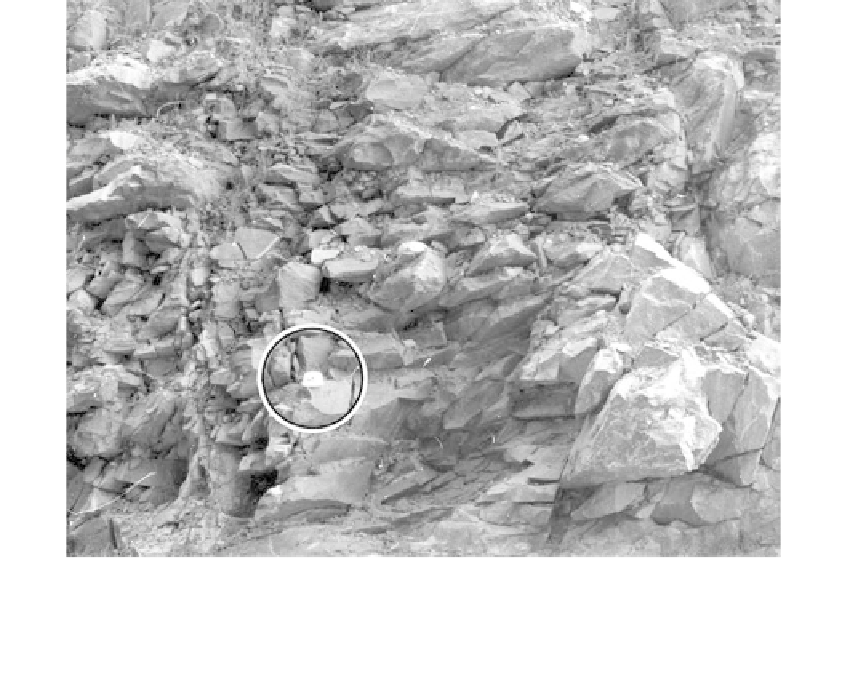Environmental Engineering Reference
In-Depth Information
FIGURE 6.44
Close jointing (
Table 5.23)
in migmatite (Rio-Santos Highway, Brazil.) (Hard hat gives scale.)
Platy Jointing
Platy jointing follows the laminations in slate
(Figure 6.2).
Sedimentary Rocks
Systematic Jointing
Normal, diagonal, and longitudinal joints form in the more brittle sandstones and
limestones because of the erosion of overlying materials, increased stresses from
expanding materials in adjacent layers, and increased stresses from desiccation and dehy-
dration.
Joints in brittle rocks are usually the result of the release of strain energy, stored during
compression and lithification, which occurs during subsequent uplift, erosion, and
unloading. Because of this dominant origin, most joints are normal to the bedding planes.
Major joints, cutting across several beds, usually occur in parallel sets and frequently two
sets intersect at about 60
o
in a conjugate system. Jointing in a siltstone is illustrated in
Figure 6.47
,
however the joint intensity has been substantially increased by the intrusion
of an underlying dike.
In interbedded sandstones and shales, weathering of the shales causes normal jointing
in the sandstones as shown in
Figure 6.48,
especially when exposed in cut.
Folding
Folding develops joints normal to the bedding and along the bedding contacts in brittle
rocks. Cleavage joints form in shales.


